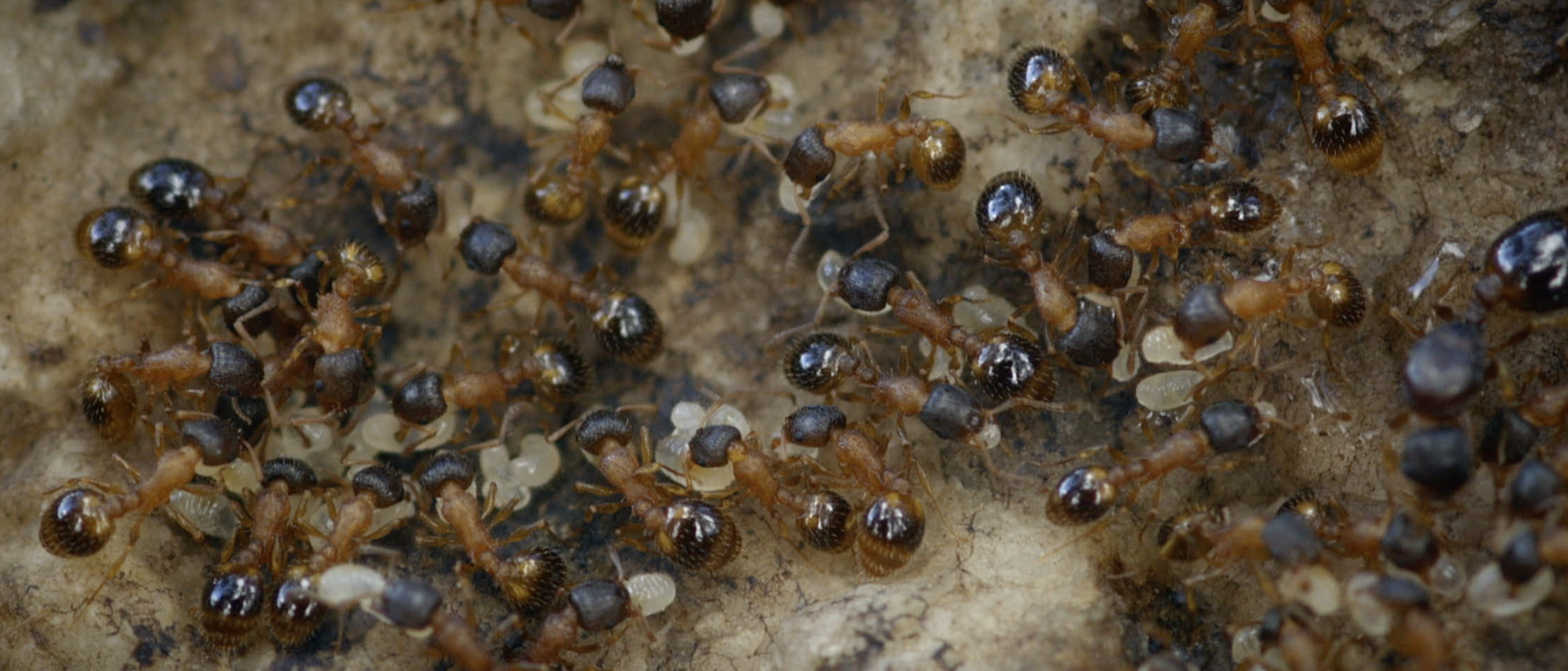At least one species of rock ant, Temnothorax rugatulus, doesn’t walk randomly at all. Instead, their search combines systematic meandering with random walks interspersed. They alternate left and right turns on a relatively regular length scale of roughly three body lengths.
The study finds that the ants’ meandering may make their search more efficient than a pure random search would, because ants tend to cross their own paths less frequently while meandering than random walk tracks, so that they less often search the same area twice.

Photo: Daniel Charbonneau, ASU
Because it’s difficult to track ants in their natural environment, the scientists moved a whole colony into the lab, where they could easily track all ants automatically and under constant conditions. They soon noticed the meandering pattern of the ants as they walked around. It raised an immediate question: could the patterns they were seeing arise from random squiggles, without any systematic rules? Or were the ants moving in a more systematic, non-random way? To find out, they compared the ant tracks with computer-simulated random walk patterns.
They report that their studies found 78 percent of ants showed significant negative autocorrelation around 10 mm, or about 3 body lengths. That means that turns in one direction usually were followed by turns in the opposite direction after a roughly constant distance. They say it likely makes the ants’ search more efficient, as the insects can stay close to the nest without repeatedly searching the same areas. The authors were impressed by the extreme forms the ants’ patterns could take from these simple principles.






Comments